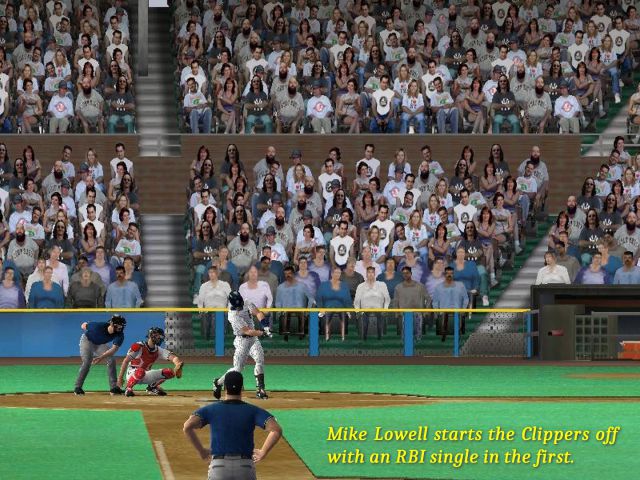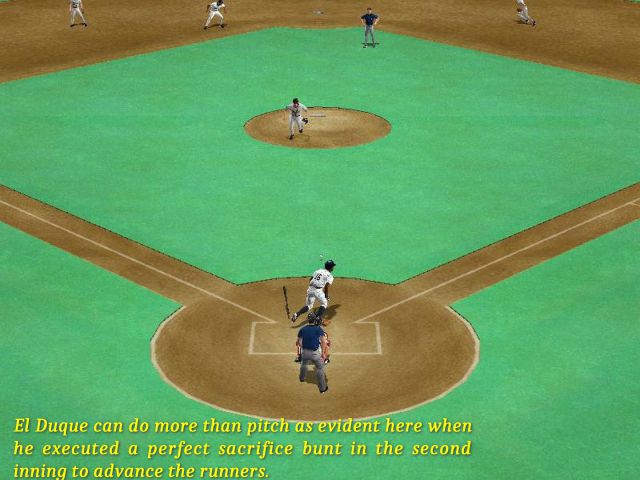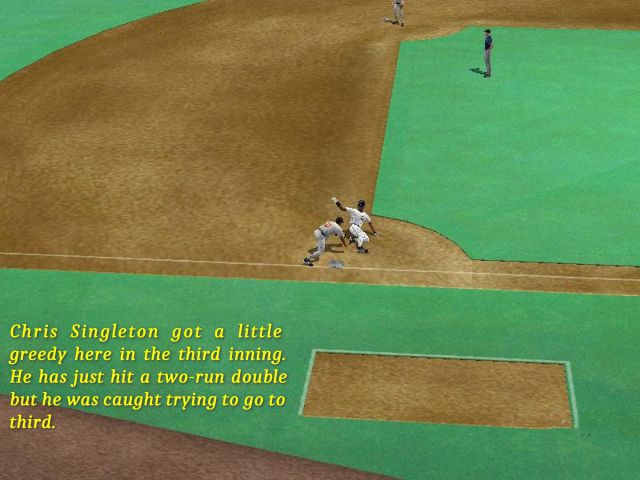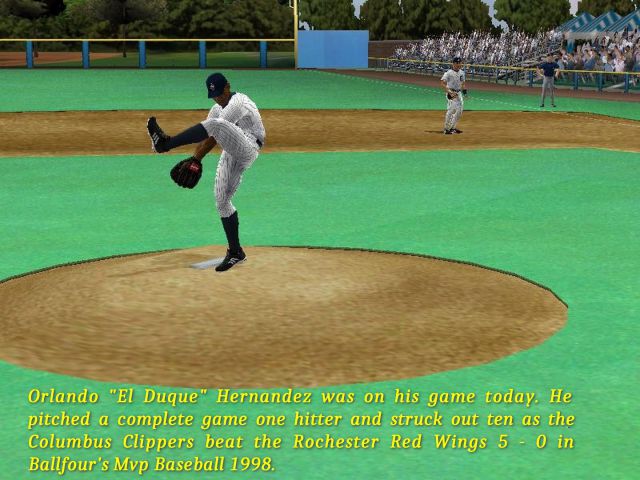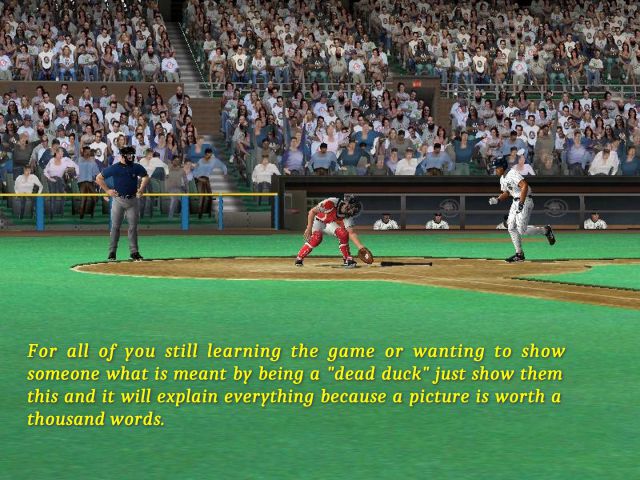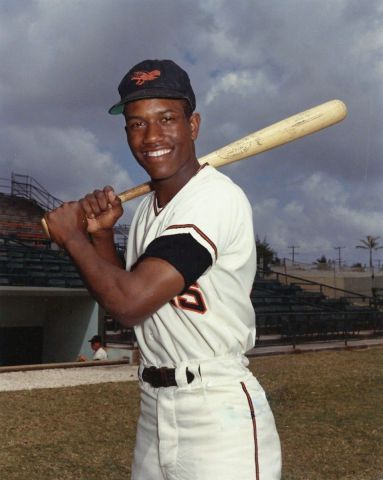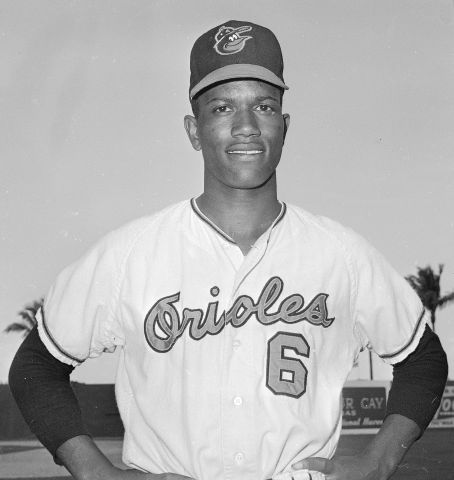-
Posts
21463 -
Joined
-
Days Won
82
Content Type
Profiles
Forums
Downloads
Everything posted by Yankee4Life
-
4 out of 10, 75 seconds. And I am done for the month of July. All Jim has to do today is log in and see what I got and he'll coast from there. I knew that I was in trouble this month right at the beginning because the month ended on a Thursday. I don't do well on Tuesdays and Thursdays. Jerrel Hasselbaink played for which team? WHO? Who scored the second goal for England, seconds before half-time? What game was this? What year? Or you just want to pick one?
-
It sure was a tough day. And don't be too hard on yourself. The last time you played this game with us you did pretty well.
-
5 out of 10, 102 seconds. An awful day if you consider I got the first four right. 🙁
-
7 out of 10, 63 seconds. I got this score despite missing this question. Zissis Vryzas left PAOK Salonica in 2000 to play for ______ ? I guessed Feyenoord. Why? Why not? I never heard of him and I don't want to. The correct answer by the way was Perugia. Yeah, I should have known. 😄
-
7 out of 10, 102 seconds. I don't get why I was so slow again but these questions were brutal.
-
10 out of 10, 40 seconds. And I'm done.
-

how to slide/jumping or sliding catch in mvp 2005?
Yankee4Life replied to safeggde's topic in MVP Baseball 2005
Where did you download the game? -
6 out of 10, 65 seconds. Today was a complete meltdown.
-
10 out of 10, 32 seconds. I needed this after my showing yesterday. And this is another month that it is going to go down to the last day. Well, two reasons. I don't follow the NBA and have not watched a game in years. Secondly, I never heard of him. 😄
-
5 out of 10, 66 seconds. I'm fed up with these kind of questions that have you beat the second you read it. Where was Arvydas Sabonis born? Answer: Who the hell is he? Real answer: Lithuania.
-
7 out of 10, 71 seconds. Not bad at all for a struggle day. And by that I mean I had to haggle with eight of the questions.
-
5 out of 10, 66 seconds. For a Tuesday this is an outstanding score.
-
7 out of 10, 59 seconds. Ok, but I should have done better.
-
10 out of 10, 34 seconds. Not bad but you guys will fly past it again. I also had a 0 out of 10.
-
Triple A baseball. Rochester Red Wings (Baltimore) at Columbus Clippers (New York Yankees) Here’s Clay Bellinger. He has a son named Cody who is three-years-old in 1998. Time certainly does fly.
-
Paul Blair Paul Blair is considered one of the premier defensive center fielders of his era. He made his major league debut on September 9, 1964, and played in 1947 games over a seventeen-year major league career, with his final game coming on June 20, 1980. He batted and threw right-handed but tried switch-hitting for a brief time. Paul Blair was born February 1, 1944, in Cushing, Oklahoma, but his family moved to Los Angeles when Paul was young. He grew up a Dodgers fan, once remarking, “I was always a Dodger fan, back when they were in Brooklyn. I was a Dodger fan, mainly because of Jackie Robinson, but Duke Snider and Carl Furillo, too.” At the age of 17, Blair got a tryout from the Dodgers, but he was rejected. The Dodgers’ scouts thought the six-foot, one-inch ballplayer was too small to make it to the majors. The Mets’ scouts disagreed. Paul was signed by the New York Mets on July 20, 1961, as an amateur free agent, at the position of shortstop. Floyd “Babe” Herman signed him to his first contract for $2000. “The first day the coach told us to run out to our positions,” Paul once told a reporter. “Well, seven players went to shortstop and six went to second but only one went to right. And I knew I could throw better than him and run better than him. So I ran out to right and played there. Then the center fielder got hurt and I moved to center.” The Mets had assigned the new outfielder to Santa Barbara of the California League in 1962, where he batted .228 with 147 strikeouts. He was then sent in October to the Florida Instructional League and hit extremely well. He also met and became good friends with fellow outfielder Cleon Jones. The Mets had left Blair unprotected after a season with Santa Barbara, and the Orioles drafted him in the 1962 first-year draft. When Jones and Blair would meet after that, Cleon the Met would say, “You got your break when you got drafted,” and Paul the Oriole would reply, “You got your break when I was drafted.” The Orioles sent Blair to Elmira, New York, in 1964. Paul appeared as a pinch-runner in his major league debut on September 9, a 4-3 loss to the Washington Senators, but he did not bat or play in the field. In 1964, he appeared in a total of eight games, but he only batted in the final game. Before the 1965 season, Blair completed a six-month tour of duty with the Army Reserve at Fort Jackson, South Carolina, as a communications specialist. He opened the 1965 season in center field for the Orioles, despite not being mentioned as a starting player during spring training. Manager Hank Bauer said that Blair would hold that position “until he plays himself out of it.” His intuition and speed allowed him to play shallow and run balls down. Earl Weaver, Blair’s second manager in Baltimore, believed that saving a run is just as good as scoring a run. And Paul Blair saved many runs by patrolling the center of the Orioles’ outfield. His amazing quickness allowed him to track down balls that should have dropped in for hits. Paul would often say, “In the outfield I felt there was no ball I couldn’t get to. I played the shallowest center field of anyone.” In an interview in 1997 in USA Today Baseball Weekly, Blair explained his defensive approach to the game. “I was taught to play defense. Back in our day it was pitching and defense. Our philosophy (the Oriole way) was don’t make the little mistakes that cost you ballgames. That is the way we won over such a long period of time.” In Game Three of the 1966 World Series, Blair hit a solo home run against Claude Osteen and the Dodgers, giving Wally Bunker all the run support he needed for a 1-0 victory. In Game Four, his acrobatic leaping catch off the bat of Jim Lefebvre saved a home run and preserved a 1-0 win for Dave McNally, as part of the Orioles’ stunning four-game sweep of Los Angeles. After the 1966 season, to continue to improve his hitting skills, he played winter ball with the Santurce club in the Puerto Rican League. On May 17, 1967, the Baltimore Orioles became only the eighth team in the history of the American League to hit four home runs in the same inning (Andy Etchebarren, Sam Bowens, Boog Powell, and Dave Johnson connected in a 9-run seventh inning). Paul Blair, Frank Robinson, and Brooks Robinson also homered in that game, marking the only time in history that seven different teammates each hit a round-tripper in the same game. Blair’s 12 triples in 1967 led the American League and remain the Orioles season record. He was also a great bunter and fundamentals player. He recorded at least ten sacrifice hits four times in his career, including having 13 in 1969 (which led the league) and 17 during the 1975 season. In 1967, Blair hit .293 with an on-base percentage of .353, and a slugging percentage of .446. That batting average was fifth best in the league. He also clubbed 11 homers, with 64 RBIs and 27 doubles to go with 12 triples. As fast as he was, however, Blair concedes that he was never much of a base-stealer, with a career high of 27 in 1974 and 20 or more only three times. Blair’s best season, by OPS+, was 1967, but his most productive year was probably 1969, when he hit .285, had an on-base percentage of .327 and slugging percentage of .477. Showing more power, he smacked 32 doubles and 26 homers, stole 20 bases, scored 102 runs and had 178 hits in 150 games. He also had 76 runs batted in. Defensively, the loquacious Oriole won one of his eight Gold Gloves for the excellence he showed while roaming center field. Paul ended the 1969 season as the only center fielder to have more than 400 putouts. The next best outfielder was Del Unser with 339. Fans would wrack their brains to remember the last time they saw a ball land between Blair and the center field fence. During the 1969 campaign, the Oriole hit an inside-the-park home run at Memorial Stadium. The date was August 8, 1969, and it was the first inside-the-park homer at that stadium since Billy O’Dell had hit one in 1959. That year, 1969, would mark the first time the fans voted the Orioles’ center fielder to the All Star Game. He would also be honored as a Sporting News All-Star at the conclusion of the season. In 1970, Blair had two significant events in baseball. The first could well be the best single offensive display of his career. He hit three home runs and knocked in six runs in a game on April 29, 1970, as the Orioles beat the Chicago White Sox, 18–2. The second event was career-altering. Unfortunately, in addition to his remarkable defensive prowess, Paul Blair is remembered for receiving a severe beaning by California Angels pitcher Ken Tatum on May 31, 1970. He was carried off the field with a broken nose and serious eye and facial injuries; Blair claims he never saw the pitch. He missed the next three weeks of the season but came back to play a total of 133 games that season and insists it did not affect him. Nevertheless, Blair never equaled the offensive output from his successful 1969 season. In 1971, he attempted switch-hitting, but went 11-for-57 and gave up the experiment. The Orioles played the Cincinnati Reds in the 1970 World Series. Paul Blair set a record by garnering nine base hits in the five-game series. The center fielder clubbed .474 in that Series, out-hitting all players on both sides, but everyone remembers instead what his Hall of Fame teammate at third base, Brooks Robinson, did defensively against Lee May, Johnny Bench, and the Big Red Machine. In general, Blair was known around the league as a fastball hitter who liked the ball inside. He often crowded the plate, even after his accident in 1970. He himself admitted he was too stubborn to hit the outside pitch to right field, preferring instead to pull the ball. Part of his success at the plate came from batting ahead of Hall of Famer Frank Robinson. Blair once said, “With him behind me, I knew at two and oh or three and one counts what they’d throw me. They’re not going to walk Paul Blair to get to Frank Robinson, so they’re going to throw me a fastball. After Frank [left the Orioles], they were throwing breaking balls. And the slider was a pitch I had trouble with. I wasn’t disciplined enough to take those pitches and walk.” In 1972, Blair’s batting average dipped to a terrible .233, and his on-base percentage was only .267. Something had to be done. On June 15, 1973, Blair started seeing a Baltimore psychiatrist. After a suggestion from Chan Keith, a baseball writer for the Baltimore News American, Paul visited Dr. Jacob H. Conn and received hypnosis therapy, restoring confidence in his ability to avoid inside pitches. According to the doctor, in one session, he was able to unlearn three years of ducking out of the way every time a ball came inside. Over the next two weeks, he was hitting .522. In a dozen games, he collected 24 hits in 46 at-bats, including six doubles, a triple, and three home runs. He drove in eleven runs and scored ten. On May 29, he had been batting just .218, but a month later, he was fourth in the league at .321. He ended the season at .280. Blair accomplished a rare feat in 1973 when he hit an inside-the-park grand slam homer against the Kansas City Royals. The game was August 26 and featured Jim Palmer matched up against Paul Splittorff. Blair drove a ball into the gap. Royals outfielders Amos Otis and Steve Hovley collided in mid-air, and Blair rounded the bases. The official attendance was only 15,285. On September 3, 1973, Blair hit a three-run inside-the-park home run against John Curtis. At the end of the 1973 season, Blair was considered a unanimous Gold Glove selection. The dependable center fielder had received 44 of 49 possible votes. However, the five votes he did not receive were from the Orioles’ staff, who were not eligible to vote for him. In 1974, Blair again led all American League outfielders with 447 putouts in center field (in 1969 he had 407). In fact, nine times in his career, he had more than 300 putouts in the outfield. His defense kept him in the line-up, despite his batting .218 in 1975 and only .197 in 1976. On January 20, 1977, the Orioles traded the contract of 32-year-old center fielder Blair to the New York Yankees for Elliott Maddox, 27, and Rick Bladt, 30. At the time, Blair was the Orioles’ all-time leading base stealer with 167. He also ranked third in the Orioles record books (behind Brooks Robinson and Boog Powell) in games, at-bats, runs, hits, total bases, and runs batted in. His career average with Baltimore was .254. He had played in all five American League Championship Series and all four World Series in which the Birds were involved. His eight Gold Gloves contributed mightily to the Orioles’ success. Blair left Charm City to become a reserve for the Yankees for two seasons (both World Series championship seasons for the Bronx Bombers), and then was released just into the 1979 season. After a month off, in May 1979, the Cincinnati Reds signed Blair to a one-year contract. His acquisition gave the Reds 31 Gold Gloves on the team: Bench (10), Blair (8), Morgan (5), Concepcion (4), and Geronimo (4). Unfortunately, Blair, new to the National League, did nothing for the Reds, batting .152 in 77 games and just 145 at-bats, then went back to New York for 1980. He played in 12 games as a defensive replacement (just two at-bats), and retired at the age of 36. After his playing days were over, Blair became an outfield instructor for the New York Yankees in 1981. He was named the head baseball coach at Fordham University in August 1982 and coached the 1983 season, compiling a record of 14 - 19. That position lasted only one year, but Blair kept in touch with major league teams, offering his services again as an instructor. He last did it at the major league level for the Houston Astros in 1985. Blair had two great postseason series for the Orioles in his career. In the 1969 American League Championship Series against Minnesota, he hit .400 and slugged .733 with a homer and six RBIs, and in the 1970 World Series against the Reds, he hit .474 and slugged .526, also scoring five runs. Blair’s five hits in the final game of the 1969 American League Championship Series against Minnesota is still a record. Indeed, the former Orioles center fielder is the only player ever to get five hits in a single ALCS game. Twice he was named to the American League All-Star squad (1969, 1973). He played in a total of 52 post-season games during his 17-year baseball career, and his team won nine of 13 post-season series. He played in six World Series and won four World Series rings, two with the Orioles (1966 and 1970) and two with the Yankees (1977 and 1978). The player once known as Motormouth received votes for the American League’s Most Valuable Player in four different seasons. At the time Paul Blair retired, his eight Gold Gloves were a record for an outfielder, since broken by Ken Griffey Jr. Blair’s career fielding percentage was .987, as he only had 57 errors in 4,462 chances. He batted .250 for his career during a time when the league batting average was just .254. In his 17-year career, Blair hit .250 with 134 home runs and 620 RBI, 1,513 hits and 171 stolen bases.
-
8 out of 10, 90 seconds. Terrible time today. What was I doing? This has happened quite a few times for us.
-
10 out of 10, 34 seconds. Satisfied with today.
-
7 out of 10, 154 seconds. This is a first. I did not do this in 154 seconds. I did the quiz and as soon as I submitted my answers the page TIMED OUT. I had to keep reloading and finally it came back up. Wow. I don't know what to say. 🙁
-
9 out of 10, 68 seconds. I'm as shocked as anyone with this score to tell you the truth!
-
Thank you Jim. Soccer is not my strong point.
-
7 out of 10, 84 seconds. I don't care what the score was for me because Tuesdays are the toughest for me. What is a golden boot?
-
6 out of 10, 74 seconds. I just don't get why I start so slow every single month.
-
10 out of 10, 33 seconds. Finally a decent time and score. But you guys are going to fly by this!
-
8 out of 10, 57 seconds. Believe it or not I am happier with this score than I was yesterday because the ones I missed today I deserved to.




